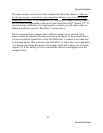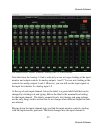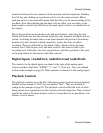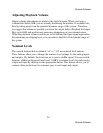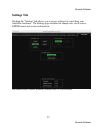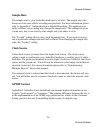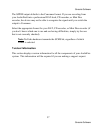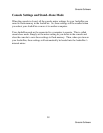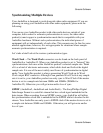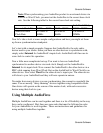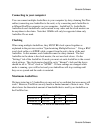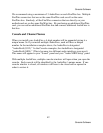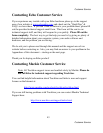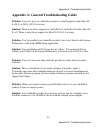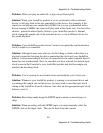Console Software
39
Console Software
Synchronizing Multiple Devices
Your AudioFire is designed to work alongside other audio equipment. If you are
planning on using your AudioFire with other audio equipment, please note the
following:
You can use your AudioFire product with other audio devices outside of your
computer, but in order for accurate synchronization to occur, the other audio
product(s) must support a synchronization mode that is compatible with your
AudioFire hardware. Without such synchronization, the individual pieces of
equipment will act independently of each other. This scenario may be fine for some
musical applications; however, it is not appropriate for situations where sample-
accurate synchronization is required.
Let’s take a brief look at the various synchronization types.
Word Clock – The Word Clock connectors can be found on the back panel of
AudioFire8 or AudioFire12. When your AudioFire product is set to “Internal” this
synchronization clock runs at the AudioFire product’s selected sample rate. Think
of it as a kind of electronic metronome, which clicks back and forth at the digital
sample rate. It is one of the most widely used forms of synchronization in digital
audio. Your AudioFire product is always generating Word Clock on its Word
Clock output BNC connector. Although it can generate Word Clock at any sample
rate it is set to, your AudioFire product can only sync to Word Clock if the master
device is set to a sample rate between 30kHz and 100kHz (200kHz for
AudioFire12). Otherwise you will get noise and/or loss of sync.
S/PDIF (AudioFire2, AudioFire4 and AudioFire8) – The Sony/Phillips Digital
Interchange Format is a serial bit-stream that has a clock signal embedded in the
data stream. When recording from an S/PDIF source, your AudioFire will utilize
the synchronization clock that is embedded in the S/PDIF while it decodes the bit-
stream. Your AudioFire can only sync to S/PDIF clock if the master device is set to
a sample rate between 30kHz and 100kHz. Otherwise you will get noise and/or
loss of sync.



